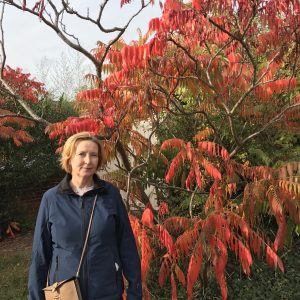 Maritta Törrönen
Maritta Törrönen
Professor
Marie Curie Individual Fellow
Anglia Ruskin University
UK
30th January 2018 | BLOG
Part 1
Background
I have studied the process of young people transitioning from out-of-home care to independence in Finland and in the United Kingdom. In the course of this pursuit, I familiarized myself with Finnish substance abuse services for youth, applying tools from ethnographic research and participatory observation, for three months in fall 2017.
These blog articles are thoughts sparked by field work. Their purpose is to introduce ideas on how the service system could better respond to the needs of young people in difficult life situations.
Engaging in participatory observation, I spent the majority of my time in the Kuvernööritie residential community for youth recovering from substance addiction, known in vernacular as ‘K-tie’ (‘K-road’). It is a treatment model developed and registered by Kalliola Settlement, operating on the basis of the Daytop treatment model. In addition, I familiarized myself with two youth homes, Mäkirinne and Saunalahti, run by Kalliolan Nuoret and specializing in substance abuse treatment, as well as Myllyhoito at Kalliola clinic, providing treatment for substance addiction. I wished to know more about how Kalliola operates, because its principles emphasize communality.
My discourse centres on different types of institutional treatment developed for substance abuse services, where the clients’ age and degree of consent vary. In this text, I use the terms out-of-home care and community treatment. Out-of-home care refers to child welfare services and to situations where a young person has been placed outside their family home. Community treatment refers to a treatment method applied in a home-like environment, based on the idea of the client learning from peers and workers in a community setting.
In the first of my blog articles, I discuss out-of-home care, which means that the young person has lived either in a foster family or in a child welfare institution. The thoughts expressed here have been sparked by interviews with young people who had transitioned from out-of-home care, conducted as part of a research project. The following texts describe voluntary community treatment for youth over 18 years of age at the K-tie centre. I include thoughts from six young people who lived at the residential community. Then, I describe interviews with employees at Myllyhoito and the youth homes. Myllyhoito is, in principle, based on voluntary participation and clients being legally of age. The youth homes provide community treatment, as well, but the participants are under 18, and they have either been taken into care or needed an urgent placement, which means that voluntary participation is rarely seen. Finally, I conclude by summarizing my thoughts from the period of field work, and I let the youths from the communities tell what they think about gaining independence, and about ways to support this process.
These blog articles are part of the EU-funded research project ‘Reciprocal Encounters – Young People Leaving Care (Vastavuoroiset kohtaamiset – Nuorten sijaishuollosta itsenäistyminen), which I have conducted in the United Kingdom.
I would like to extend my heartfelt thanks to the young people and workers who have shared their experiences with me. It has been a great pleasure to get to meet you.
Translated from Finnish by Heta Pukki
